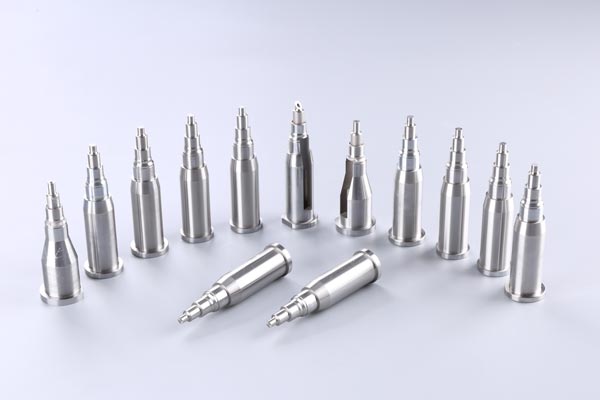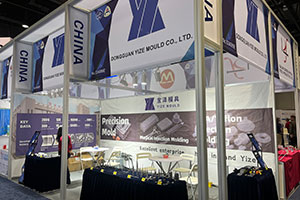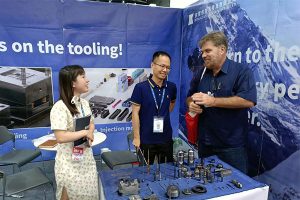Strategies for Ensuring Dimensional Accuracy of Tungsten Carbide Dies
I. Introduction: The Core Value of Dimensional Accuracy in Tungsten Carbide Dies Tungsten carbide dies, renowned for their exceptional hardness, wear resistance, and thermal stability, have become indispensable equipment in […]
I. Introduction: The Core Value of Dimensional Accuracy in Tungsten Carbide Dies
Tungsten carbide dies, renowned for their exceptional hardness, wear resistance, and thermal stability, have become indispensable equipment in high-end manufacturing sectors such as metal processing, plastic molding, and die-casting. The dimensional accuracy of these dies directly impacts product yield rates and production efficiency, particularly in precision electronics, automotive components, and other high-value-added industries where deviations as small as 0.01mm can lead to mass rejection. Therefore, establishing a comprehensive precision control system throughout the manufacturing process represents a critical challenge. This article systematically explores strategies for ensuring dimensional accuracy in tungsten carbide dies from four dimensions: design optimization, material selection, process refinement, and inspection/correction.
II. Die Design: The Foundation of Precision Control
1. Dimensional Tolerance System Construction
The design phase must establish a three-tier tolerance control mechanism:
Our factory business: carbide parts, mold parts, medical injection molds, precision injection molds, teflon PFA injection molding, PFA tube fittings. email: [email protected],whatsapp:+8613302615729.
- Basic dimensions adopt ISO 2768-m class tolerances
- Functional mating surfaces implement IT7~IT8 precision tolerances
- Critical features (e.g., cavity depth) set stringent ±0.005mm tolerances
Through 3D modeling software for tolerance stack-up analysis, cumulative errors are ensured to remain within product allowances.
2. Structural Thermomechanical Optimization
Finite element analysis (FEA) simulates thermal stress distribution during die operation to optimize cooling channel layouts. For cores with length-to-diameter ratios exceeding 5:1, conformal cooling systems are designed to limit thermal deformation to ≤0.003mm/℃. Topology optimization simultaneously reduces mating surface quantities to mitigate cumulative error risks.
3. Material Performance Matching
Cobalt-containing (6%~12%) tungsten carbide grades are selected to balance hardness (HRC88~92) and toughness. For high-temperature applications, nanocrystalline treatment reduces the thermal expansion coefficient to 4.5×10⁻⁶/℃, significantly enhancing thermal stability.

III. Manufacturing Processes: The Critical Path to Precision Realization
1. Ultra-Precision Machining Technologies
- 5-Axis Simultaneous Machining: Utilizes CNC machines with 0.001° positioning accuracy for complex surface molding
- Wire EDM with Powder Mixing: Achieves surface roughness ≤Ra0.2μm, minimizing subsequent polishing
- Mirror Finishing: Combines elastic polishing heads with diamond abrasives to attain Ra0.05μm cavity surfaces
2. Closed-Loop Process Parameter Control
A cutting parameter database dynamically adjusts spindle speeds (8,000~12,000r/min) and feed rates (0.05~0.1mm/r) based on material hardness. Infrared thermometers monitor machining temperatures in real-time, while high-pressure internal cooling systems (8MPa) limit thermal deformation to ≤0.002mm.
3. Intelligent Assembly Technologies
Laser trackers perform spatial positioning of components with assembly clearances maintained at 0.003~0.005mm. Hydraulic synchronous assembly fixtures ensure parallelism and perpendicularity meet 0.005mm/100mm standards for multi-piece dies.
IV. Inspection & Correction: The Final Safeguard for Precision
1. Multi-Dimensional Inspection Systems
- CMM Measurement: Employs 0.5μm-accuracy coordinate measuring machines for full-element inspection
- Industrial CT Scanning: Uses X-ray tomography to detect internal cavity dimensional deviations and defects
- Online Monitoring: Integrates laser interferometers with temperature compensation modules for real-time machining feedback
2. Precision Correction Technologies
- Electrochemical Micro-Machining: Applies pulse electrolysis for 0.01mm-level local corrections
- Laser Cladding Restoration: Deposits nano-ceramic coatings via laser melting to restore original dimensions while enhancing surface hardness
- Stress Relief Treatment: Uses vibration stress relief (VSR) to eliminate residual stresses and prevent dimensional rebound after correction
V. Future Outlook: Intelligent Manufacturing Achieves Ultimate Precision
With Industry 4.0 advancements, tungsten carbide die manufacturing will evolve toward “digital twin + AI correction” paradigms. Virtual commissioning platforms enable prediction and optimization of precision risks before physical machining. Meanwhile, machine learning-based adaptive machining systems will achieve dynamic optimization of process parameters. Within the next five years, dimensional accuracy of tungsten carbide dies is projected to break the ±0.001mm threshold, providing stronger equipment support for advanced manufacturing.






